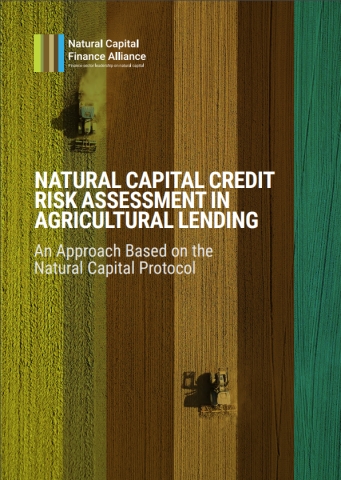
Agriculture is a high risk sector both in terms of its dependencies and impacts on natural capital. A confluence of pressures driven by consumption patterns and demographic changes, land degradation, water scarcity, pollution, loss of biodiversity and climate change combine to compromise our ability to continue current production patterns while satisfying increasing demand from population growth and changing diets.
We are seeing increasing incidents of droughts, floods, pollination failure and changing temperature patterns affecting yields and crop selection. Despite this, the finance sector has relatively little experience with assessing agricultural sustainability and its effect on longterm productivity in a systematic manner.
Supporting financial institutions’ ability to analyse natural capital related risks and opportunities in agriculture requires the development of new decision support frameworks for different asset classes and financial products. Provided here is a framework for the inclusion of natural capital considerations into credit risk assessment for agricultural lending.
This framework has been developed on the knowledge that agricultural enterprises have significant impacts and dependencies on natural capital, leading to risks (and opportunities) which are unlikely to have been fully evaluated by lenders in the past, leading to sub-optimal allocation of capital in current credit risk assessment processes. Evaluating these natural capital risks (and/or opportunities) would allow improved allocation of capital, with more flowing towards enterprises with better management of natural capital impacts and dependencies, resulting in enhanced financial outcomes for the lender, and greater value for society as a whole.
